
Fundamentals
The very notion of Follicular Regeneration whispers of beginnings, of cyclical return, a rhythm inherent within every strand of hair. At its most elemental, this biological occurrence speaks to the scalp’s capacity to renew its hair-producing units. Each individual hair follicle, a tiny organ nestled within the skin, undergoes a remarkable cycle of growth, regression, and rest.
Following a period of dormancy, the follicle reactivates, giving rise to a new hair shaft. This continuous process ensures a steady supply of hair, replacing shed strands and maintaining the scalp’s covering.
For textured hair, this cycle carries particular resonance. The unique helical shape of the hair follicle, dictating the curl pattern, is central to its identity. Understanding the basic mechanics of regeneration provides a foundation for appreciating the longevity and vitality of kinky, coily, and wavy hair. Ancestral communities, long before microscopes revealed cellular divisions, held an intuitive grasp of this life cycle.
Their practices, passed down through generations, often centered on nurturing the scalp, acknowledging its role as the source of hair’s vitality. They recognized that a healthy scalp yielded vibrant hair, a testament to observed regeneration.
Follicular Regeneration describes the scalp’s innate ability to renew hair-producing structures, ensuring continuous hair growth and replacement.

Ancient Observances of Hair’s Renewal
Across various ancestral traditions, hair was never simply an adornment; it held spiritual, social, and practical significance. The shedding of hair was observed, not as a loss, but as a natural part of a greater continuum. Traditional healers and caretakers understood that hair, much like the seasons, moved through phases. Their methods for promoting hair health, though not termed “follicular regeneration,” directly supported the conditions conducive to it.
- Scalp Massages ❉ Many West African and diasporic practices incorporated regular, gentle scalp manipulation. This ritual, often performed with natural oils, improved circulation to the scalp, a foundational element for supporting active follicles.
- Herbal Infusions ❉ Plant-based concoctions, derived from indigenous flora, were applied to the scalp. Ingredients like aloe vera, hibiscus, and various barks, known for their soothing and fortifying properties, contributed to a healthy follicular environment.
- Protective Styles ❉ Styles such as braids, twists, and locs, prevalent across African and Afro-diasporic cultures, shielded the hair and scalp from environmental stressors. These styles reduced tension on the follicles, allowing them periods of rest and rejuvenation.
The communal act of hair grooming served as a practical application of this ancestral knowledge. Grandmothers and aunties, with hands steeped in wisdom, taught younger generations the rhythms of care. Their guidance, often accompanied by stories and songs, instilled a reverence for the hair’s capacity for renewal.
This collective wisdom, deeply embedded in cultural heritage, represents an early, profound interpretation of what we now call follicular regeneration. The hair, in its cycles of growth and rest, mirrored the cycles of life itself, connecting individuals to a larger, enduring lineage.
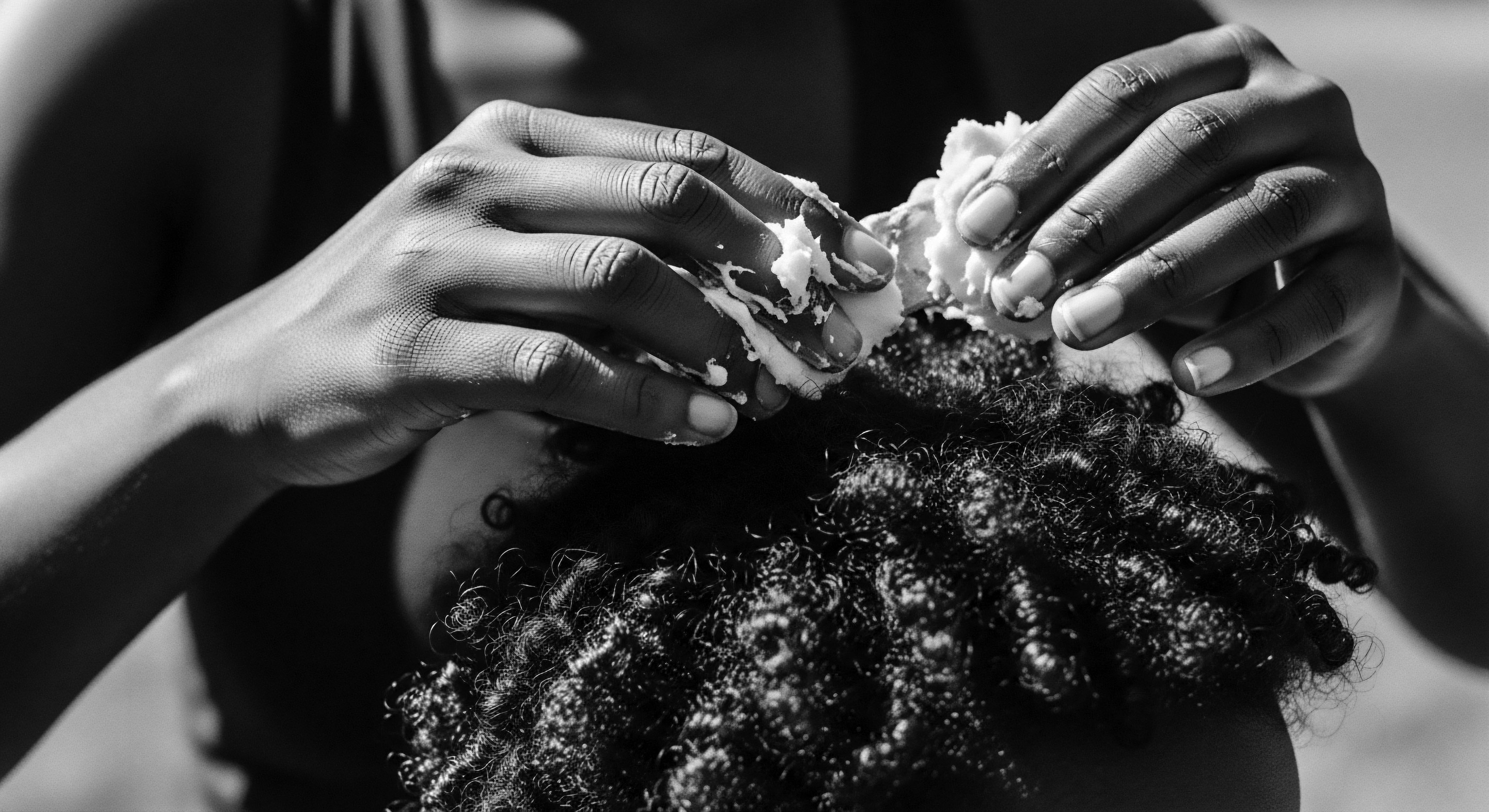
Intermediate
Moving beyond the foundational understanding, Follicular Regeneration reveals itself as a sophisticated biological dance, particularly compelling when examining textured hair. The hair follicle is not a static entity; it is a dynamic mini-organ with distinct stem cell populations that orchestrate the growth cycle. These stem cells, residing in a specialized region called the bulge, are the architects of new hair.
Their activation signals the beginning of a new anagen (growth) phase, driving the formation of a new hair shaft. The precise regulation of these stem cells determines the length and diameter of hair, alongside the duration of each growth cycle.
Textured hair, with its unique structural geometry, presents fascinating adaptations within this regenerative process. The elliptical cross-section of the follicle in coily hair, for instance, means the hair shaft itself grows in a helical fashion, forming tight curls. This structural distinction places particular demands on the regenerative machinery.
The constant coiling and bending of the hair, while a source of immense beauty, can also render it susceptible to mechanical stress, potentially impacting the follicular environment over time. Understanding these specificities allows for a more attuned approach to care, one that honors both the biological realities and the ancestral legacy of textured strands.
Follicular Regeneration relies on specialized stem cells within the follicle to initiate new growth cycles, a process uniquely adapted in textured hair.
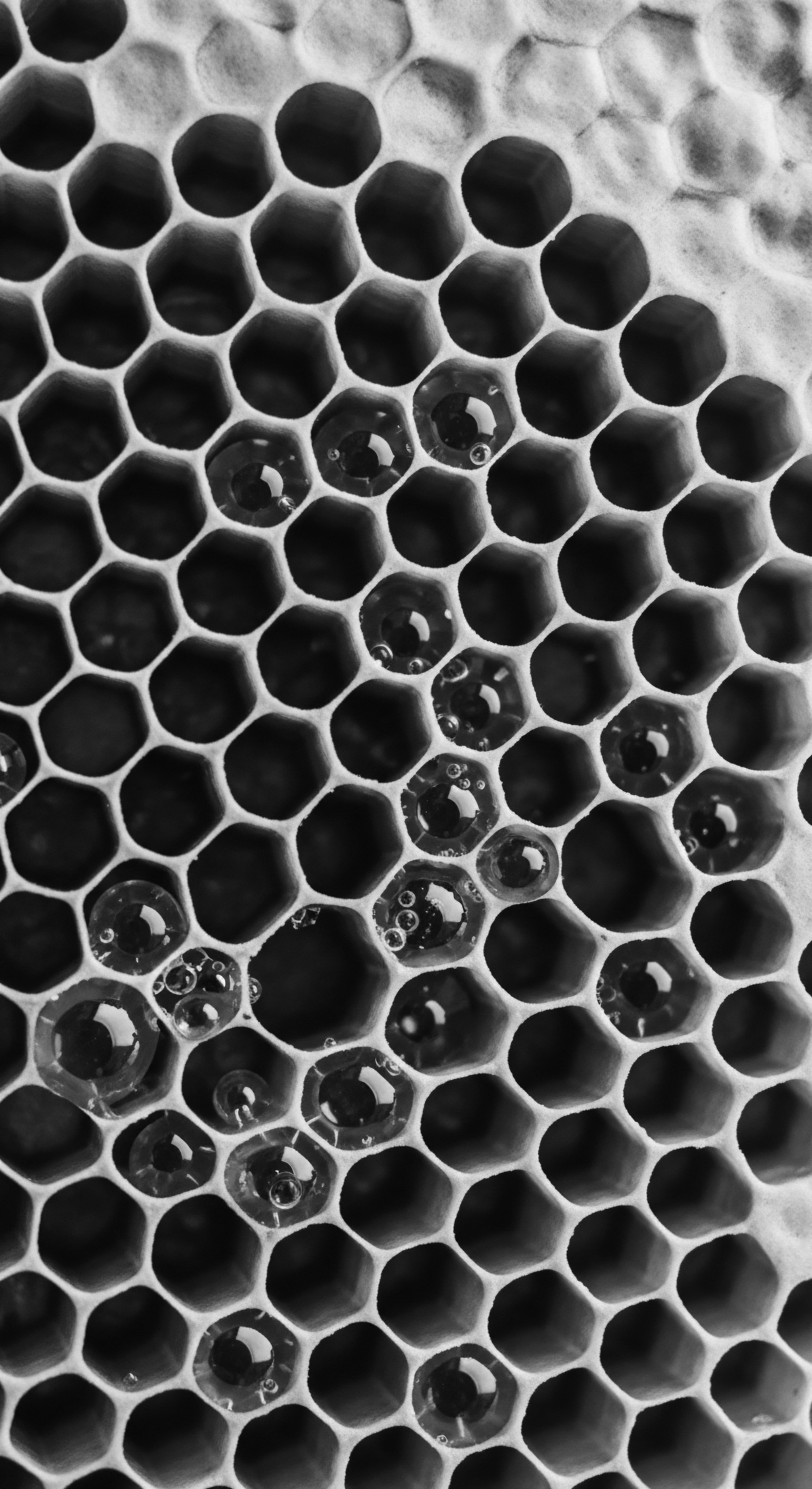
The Ancestral Science of Scalp Health
Ancestral practices, often dismissed as mere folk remedies, frequently aligned with principles now validated by contemporary science concerning Follicular Regeneration. While the precise cellular mechanisms were unknown, the outcomes of these traditional methods speak volumes. Communities understood that a healthy scalp was the bedrock of hair vitality. They recognized that irritation, dryness, or excessive tension could impede growth, intuiting the delicate balance required for follicular function.
Consider the widespread use of natural butters and oils in Black and mixed-race hair traditions. Shea butter, cocoa butter, and various plant oils like coconut and castor oil were not merely moisturizers for the hair shaft. They were meticulously applied to the scalp, often with warming techniques, to soothe, protect, and nourish the skin where the follicles reside. These applications likely contributed to maintaining the scalp’s barrier function, reducing inflammation, and providing a conducive environment for stem cell activity and subsequent regeneration.
| Ancestral Practice Scalp Oiling & Massage |
| Contemporary Scientific Link to Follicular Regeneration Improved blood circulation, reduced inflammation, provision of fatty acids for skin barrier integrity, potentially supporting dermal papilla cells. |
| Ancestral Practice Herbal Rinses & Infusions |
| Contemporary Scientific Link to Follicular Regeneration Antioxidant and anti-inflammatory compounds from plants, antimicrobial properties maintaining a healthy scalp microbiome, promoting a balanced follicular environment. |
| Ancestral Practice Protective Styling |
| Contemporary Scientific Link to Follicular Regeneration Minimization of mechanical stress on hair follicles, prevention of traction, allowing follicles to rest and recover, supporting longer anagen phases. |
| Ancestral Practice Dietary Wisdom |
| Contemporary Scientific Link to Follicular Regeneration Consumption of nutrient-dense, indigenous foods providing vitamins, minerals, and proteins vital for keratin synthesis and cellular proliferation within the follicle. |
| Ancestral Practice The deep wisdom of ancestral hair care practices often mirrored and supported the biological needs of Follicular Regeneration, even without explicit scientific terminology. |
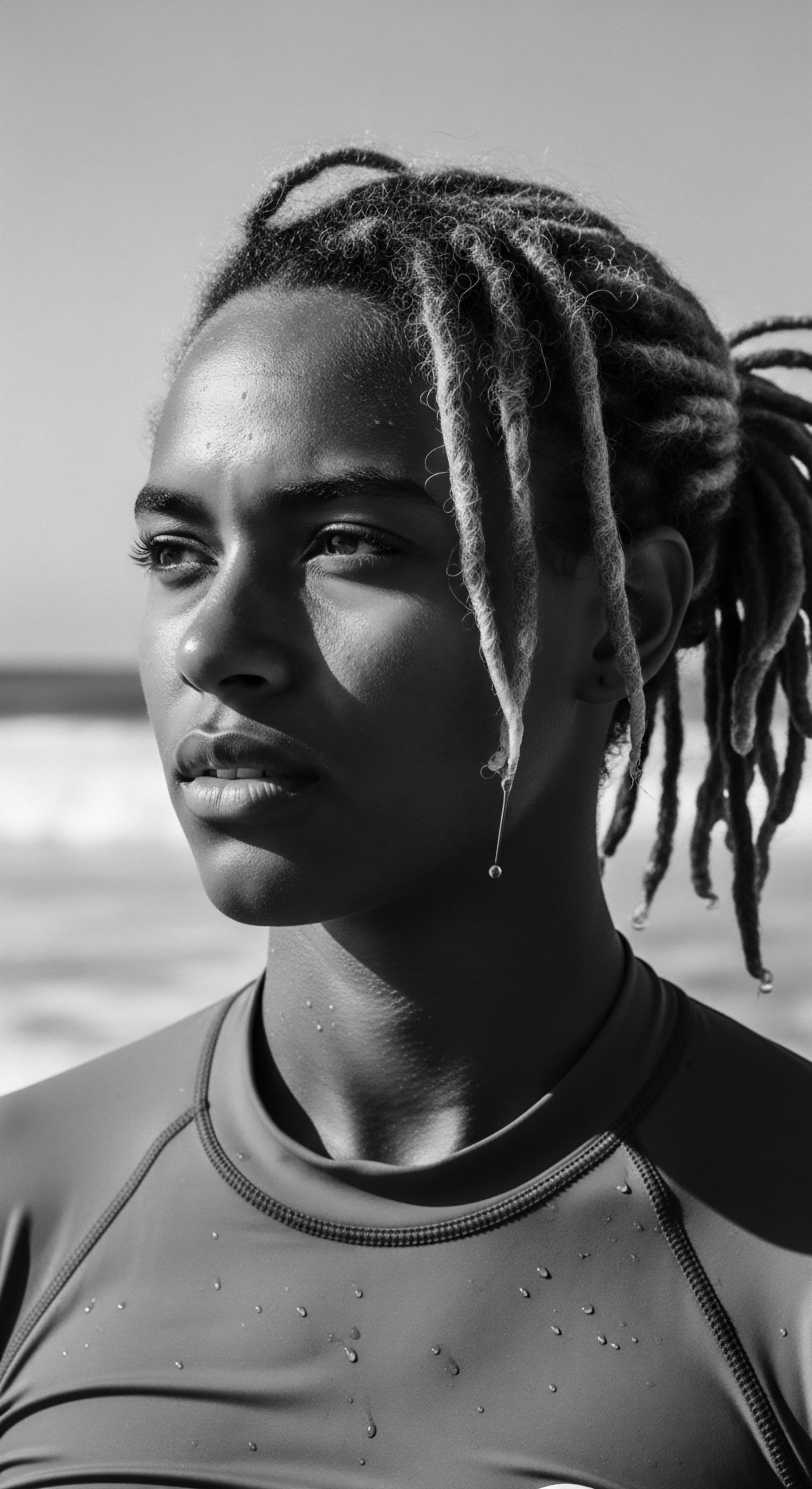
Hair’s Memory and Inherited Resilience
The very concept of hair’s memory, though not a scientific term for cellular recall, speaks to the inherited predispositions within textured hair. The follicular structure, determining curl pattern, is genetically determined, passed down through generations. This genetic blueprint shapes how the follicle regenerates, how it responds to its environment, and its inherent resilience. For communities whose hair has been a marker of identity, status, and resistance, understanding this inherited aspect of follicular health is particularly poignant.
The resilience of textured hair, despite historical attempts to straighten or diminish its natural form, is a testament to the robust regenerative capacity of its follicles. Even after years of chemical processing or excessive heat, the hair often returns to its natural curl pattern, a quiet declaration of its follicular memory. This persistent return to form speaks to the enduring strength of the hair follicle’s regenerative program, a biological inheritance that defies imposed alterations. It is a biological echo of cultural persistence.
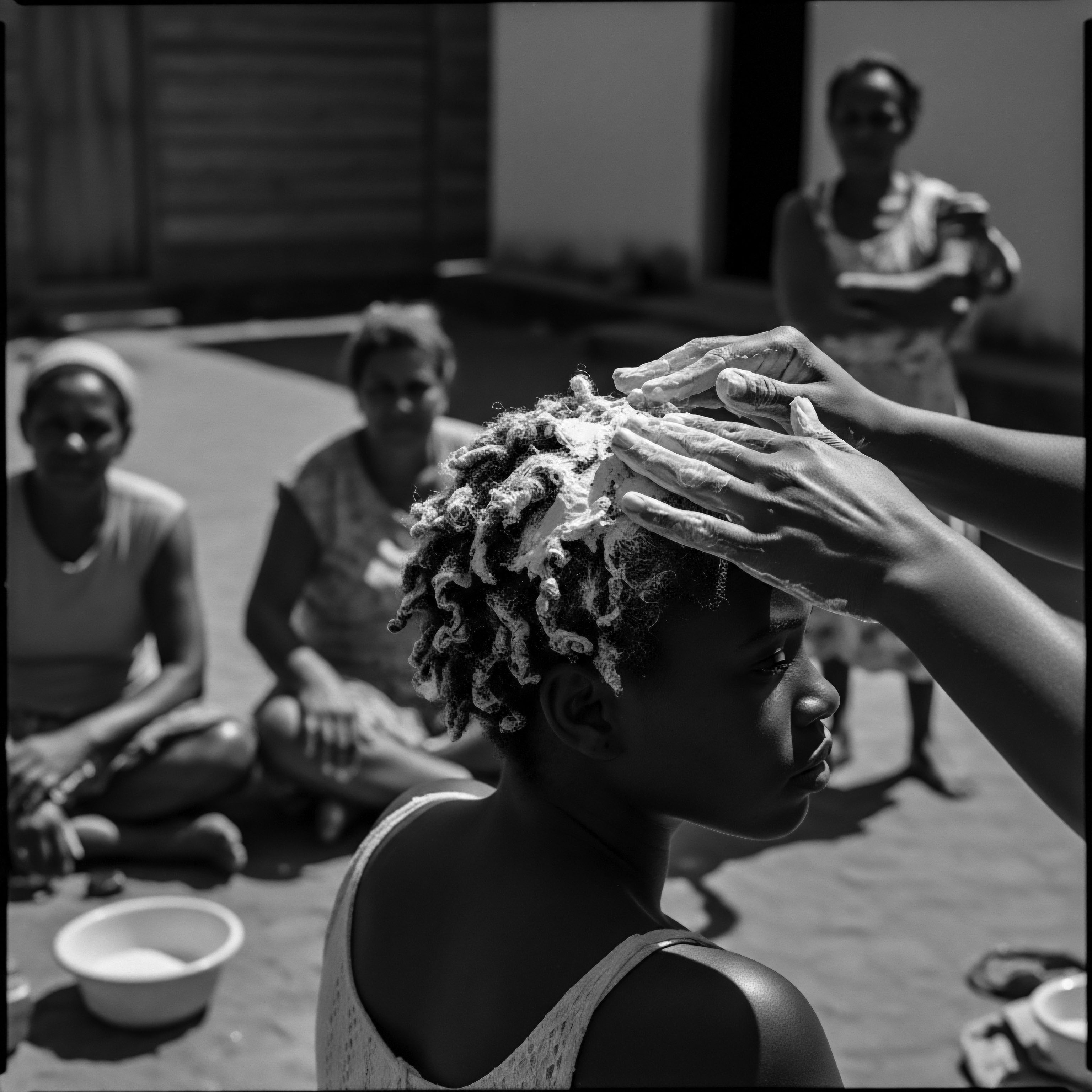
Academic
Follicular Regeneration, within the academic lexicon, describes the complex biological phenomenon where the hair follicle, a highly dynamic mini-organ, undergoes cyclical periods of growth (anagen), regression (catagen), and rest (telogen), culminating in the de novo formation of a hair shaft following a quiescent phase. This intricate process is meticulously regulated by a precise interplay of signaling pathways, growth factors, and stem cell populations residing within the follicle, particularly in the bulge and dermal papilla. The dermal papilla, a mesenchymal cell aggregate at the base of the follicle, serves as a signaling center, instructing the overlying epithelial cells of the hair matrix to proliferate and differentiate, giving rise to the various layers of the hair shaft and inner root sheath. The integrity and responsiveness of these cellular compartments are paramount for sustained hair production.
For textured hair, the anatomical and physiological distinctions of the follicle impart unique characteristics to this regenerative cycle. The highly curved and often asymmetrical follicular canal, along with variations in the distribution of keratinocytes and melanocytes, contributes to the characteristic helical growth of the hair shaft. These structural deviations mean that the regenerative processes in textured hair follicles operate within a biomechanical environment distinct from straight hair. The continuous bending and torsional forces experienced by tightly coiled hair, for instance, can place unique demands on the integrity of the follicle, potentially influencing the longevity of the anagen phase or increasing susceptibility to specific forms of hair loss, such as traction alopecia.
The academic definition of Follicular Regeneration centers on the cyclical, stem cell-mediated renewal of hair follicles, with textured hair presenting distinct biomechanical considerations.
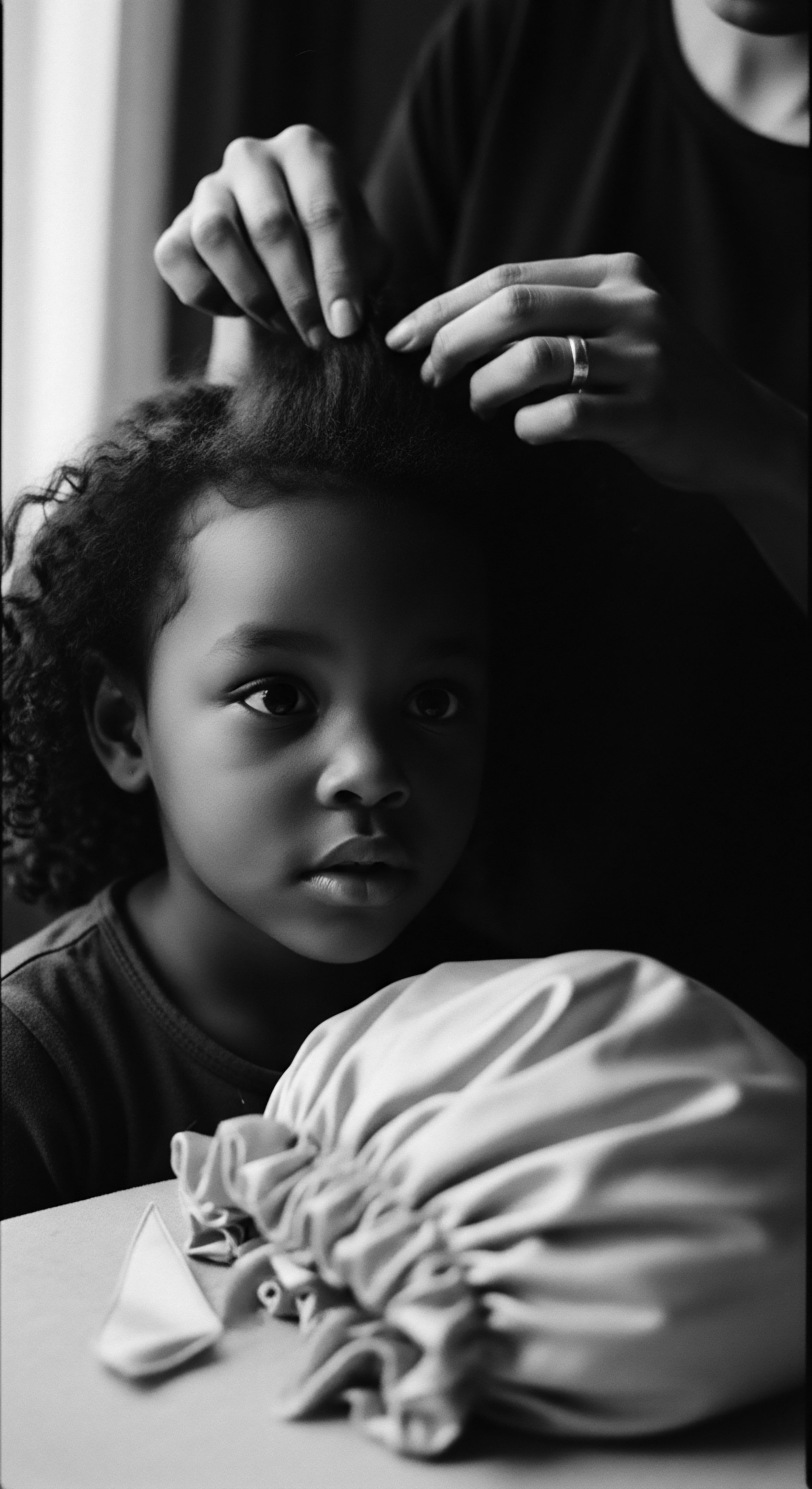
Interconnectedness of Follicular Regeneration and Hair Styling Practices in Diasporic Communities
The study of Follicular Regeneration in textured hair cannot be divorced from the lived experiences and historical styling practices of Black and mixed-race communities. For generations, cultural practices involving hair manipulation, from intricate braiding patterns to the use of heat for straightening, have inadvertently interacted with the delicate mechanisms of follicular renewal. While some practices, like protective styling, have historically supported follicular health by minimizing daily manipulation, others, particularly those aimed at altering natural curl patterns, have introduced stressors that can perturb the regenerative cycle.
A notable example is the prevalence of Traction Alopecia (TA) within communities with textured hair. TA, a form of hair loss caused by prolonged tension on the hair follicle, is a direct consequence of styling practices that pull on the hair shaft, such as tight braids, weaves, or cornrows worn for extended periods. This continuous mechanical stress can lead to inflammation around the follicle, ultimately causing follicular miniaturization and permanent hair loss.
Research indicates that the unique morphology of textured hair follicles, including their curvature, may render them more susceptible to the damaging effects of traction (Miteva & Tosti, 2013). This highlights a critical intersection where cultural practice, biological predisposition, and follicular health converge.
Understanding the specific vulnerabilities of textured hair follicles to mechanical stress offers a pathway to developing hair care strategies that honor cultural aesthetics while preserving follicular integrity. This understanding requires a deep appreciation for the historical context of styling choices, often driven by societal pressures or aesthetic preferences, alongside a scientific grasp of the regenerative capacity of the follicle. It is a testament to the resilience of these follicles that, despite centuries of diverse styling practices, the inherent capacity for regeneration persists, allowing for the re-emergence of natural textures once damaging practices cease.
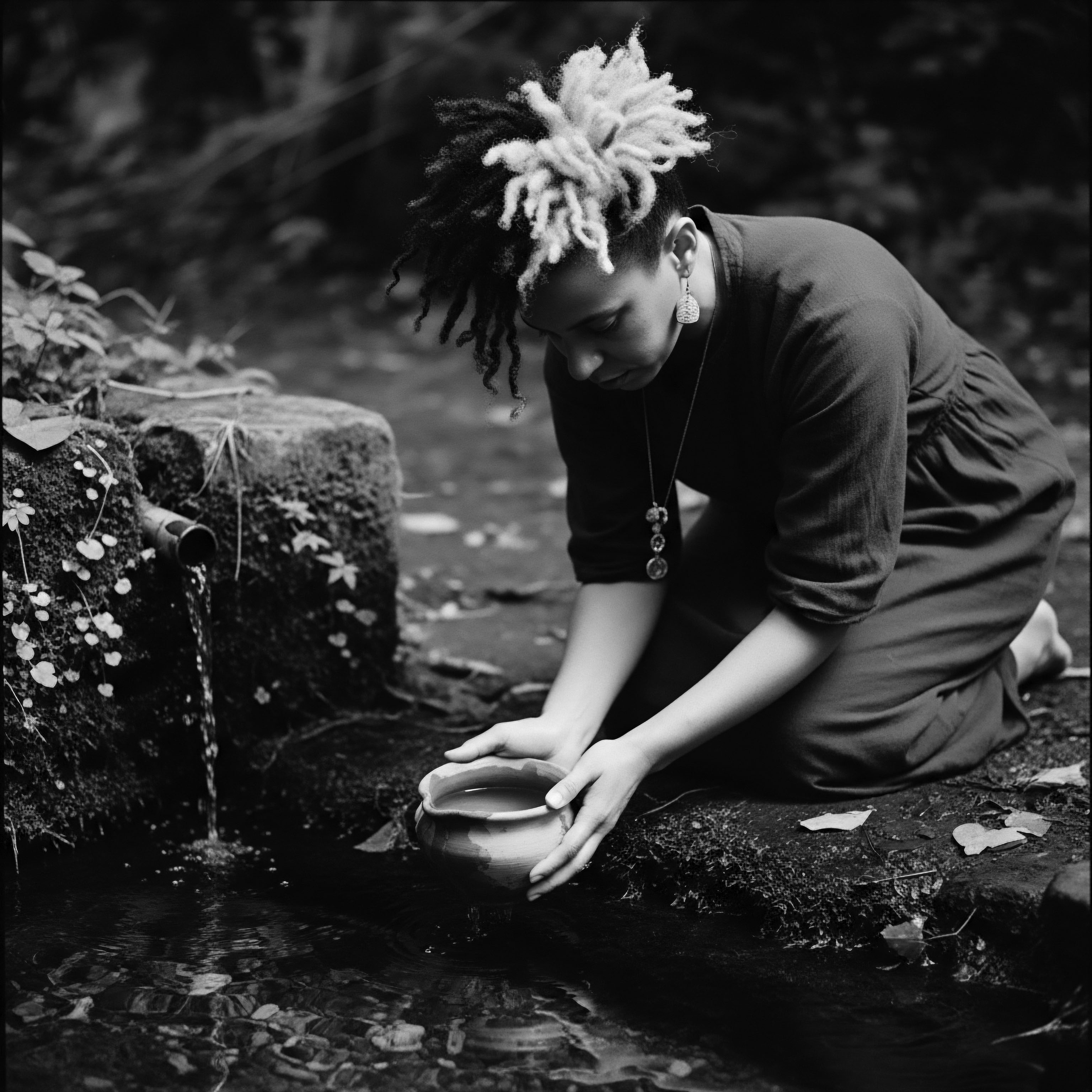
Ancestral Wisdom and Modern Science ❉ A Confluence in Follicular Support
The ancestral knowledge systems of Black and mixed-race communities, often dismissed in the past, offer profound insights into supporting follicular health. Many traditional hair care rituals, though not framed in scientific terms, intuitively addressed conditions conducive to Follicular Regeneration. The consistent application of natural emollients, the practice of scalp cleansing with mild botanical agents, and the preference for styles that minimized manipulation all contributed to a microenvironment supportive of the hair follicle.
For instance, the historical use of specific botanical ingredients for hair growth and scalp health across various African and Afro-diasporic traditions speaks to an observational ethnobotany. While the exact biochemical mechanisms were unknown, the consistent application of certain plant extracts likely provided anti-inflammatory, antimicrobial, or antioxidant benefits to the scalp, conditions known to support follicular stem cell activity and reduce oxidative stress, both beneficial for regeneration. The practice of oiling the scalp with nutrient-dense oils, such as those derived from specific seeds or nuts, provided lipids that maintained the skin barrier, reducing transepidermal water loss and preventing scalp dryness, which can negatively impact follicular function.
The academic investigation of Follicular Regeneration, therefore, gains significant depth when informed by these historical and cultural perspectives. It moves beyond a purely reductionist biological view to encompass the holistic interactions between genetic predispositions, environmental stressors, and culturally inherited care practices. The aim becomes not merely to stimulate growth, but to sustain the inherent regenerative potential of textured hair follicles, respecting their unique biology and their enduring place within identity and heritage. This scholarly pursuit acknowledges that the “science” of hair care has always existed within these communities, albeit expressed through different vocabularies and methodologies.
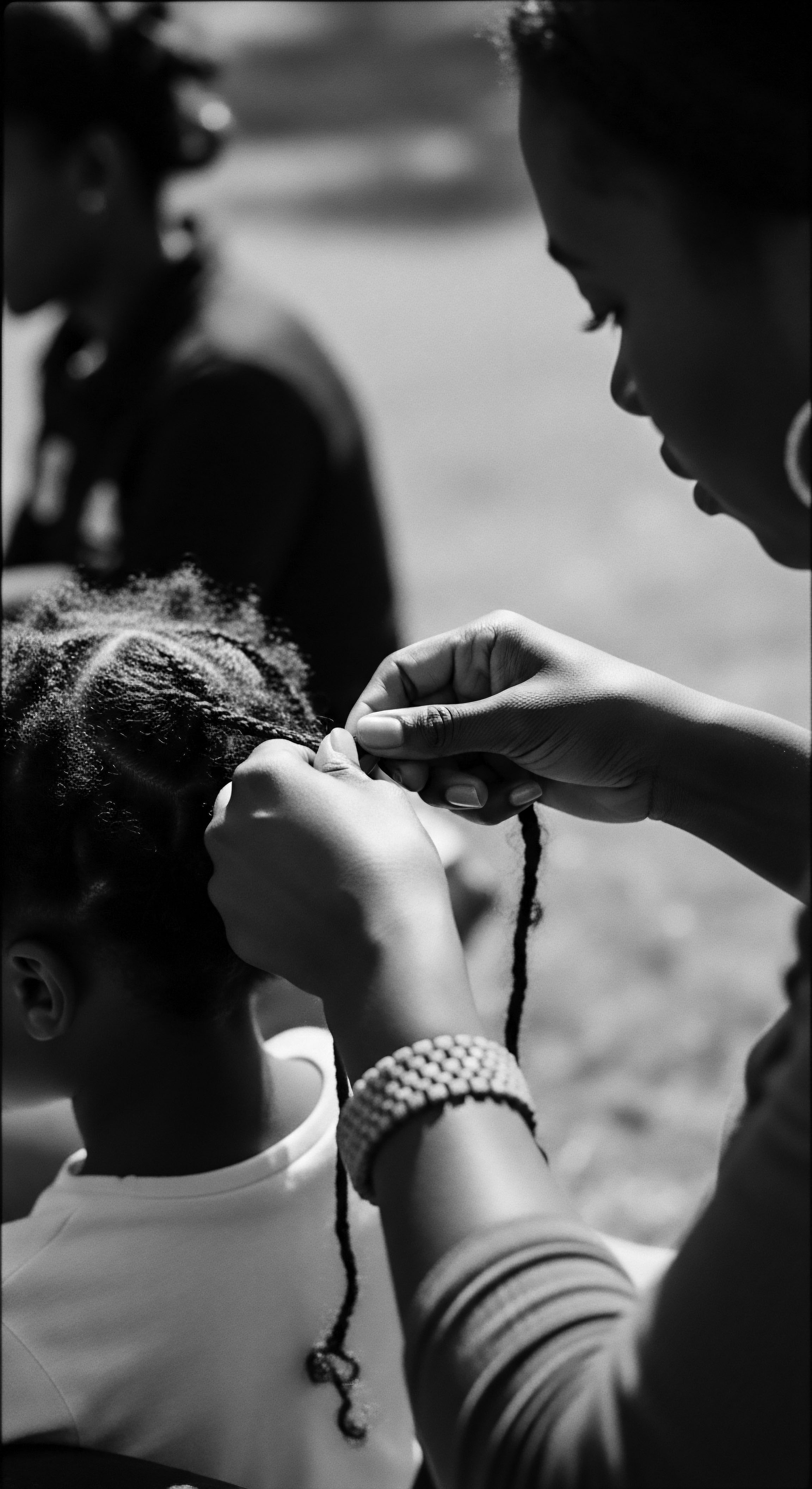
Reflection on the Heritage of Follicular Regeneration
The story of Follicular Regeneration, when viewed through the lens of Roothea’s ‘Soul of a Strand’ ethos, extends beyond biology. It speaks to the enduring spirit of textured hair, a spirit that has weathered centuries of challenges, celebrated triumphs, and carried the weight of ancestral memory. The capacity for hair to return, to sprout anew from the very roots, mirrors the resilience embedded within Black and mixed-race communities themselves. It is a biological affirmation of persistence, a silent declaration that what was lost can indeed be reclaimed, what was dormant can be reawakened.
This regenerative cycle is not merely a scientific curiosity; it is a profound echo of our heritage. Each coil, every wave, carries within it the genetic imprint of those who came before, their stories etched into the very structure of the hair follicle. The wisdom of our foremothers, who tended to scalps with loving hands and natural remedies, understood regeneration in a way that transcended scientific nomenclature.
They saw the vitality, the potential for renewal, and they nurtured it. Their practices, whether through protective styling or the application of ancestral oils, were acts of preservation, ensuring the continuation of a legacy.
The future of textured hair care, then, is not about discarding the past but about honoring it with newfound understanding. It involves recognizing that the science of Follicular Regeneration can illuminate and affirm the efficacy of age-old traditions. It is a call to tend to our hair not just as a biological entity, but as a living archive of identity, resistance, and beauty. The continuous promise of regeneration within each follicle serves as a powerful reminder ❉ our hair, like our heritage, is ever-present, ever-renewing, a constant source of strength and self-discovery.
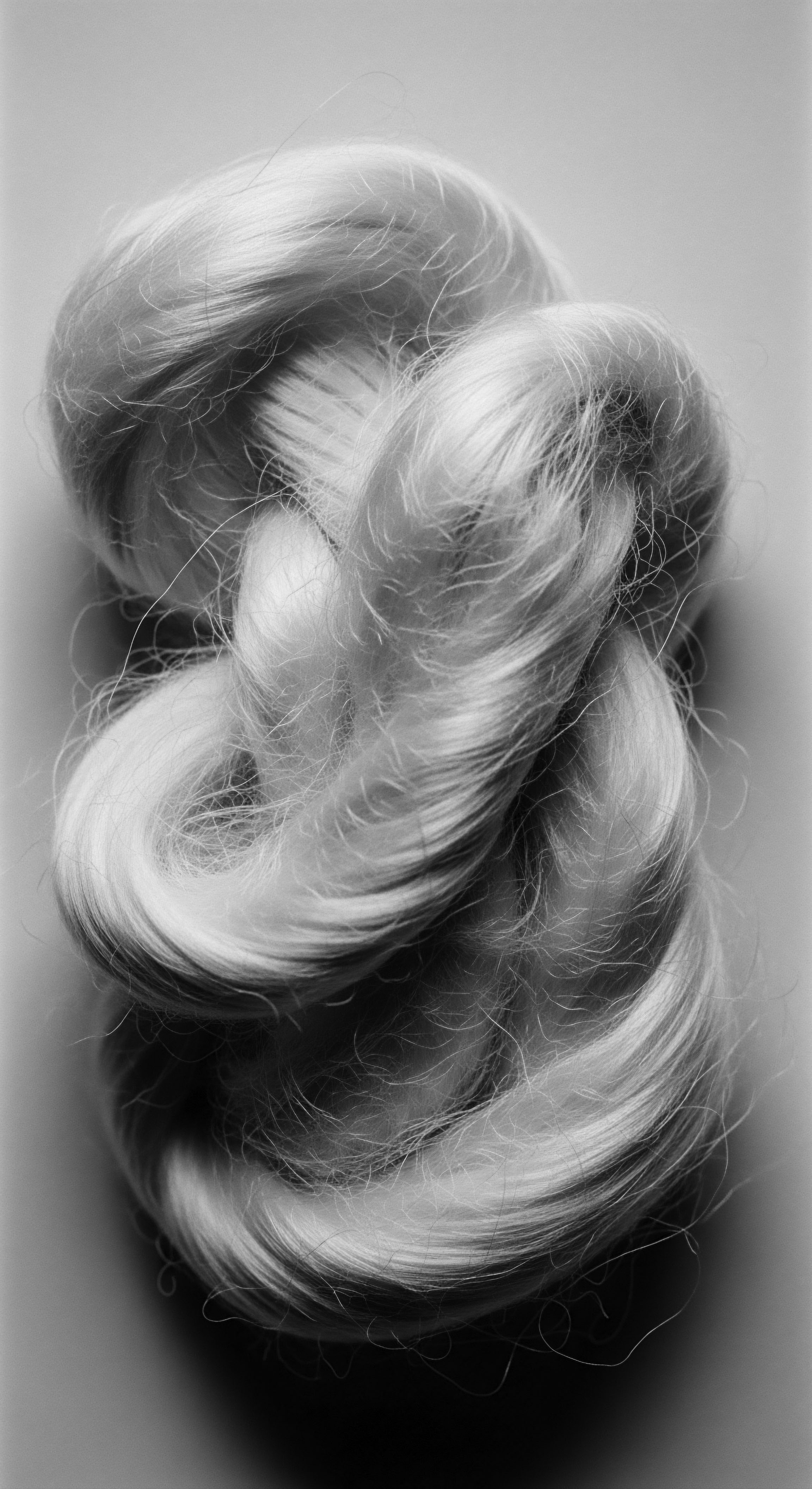
References
- Miteva, M. & Tosti, A. (2013). Traction Alopecia. Clinical, Cosmetic and Investigational Dermatology, 6, 139–142.
- Gamble, H. (2009). The Cultural Significance of Hair in African and African American Communities. Journal of Black Studies, 40(2), 223-242.
- Robbins, C. R. (2012). Chemical and Physical Behavior of Human Hair. Springer.
- Dawber, R. P. R. & de Berker, D. (2007). Diseases of the Hair and Scalp. Blackwell Publishing.
- Abbas, A. K. Lichtman, A. H. & Pillai, S. (2018). Cellular and Molecular Immunology. Elsevier.
- Carver, P. (2008). Hair Story ❉ Untangling the Roots of Black Hair in America. St. Martin’s Press.
- Ehrlich, P. R. (2008). The Anthropology of Hair ❉ An International Survey. Journal of Anthropology, 2008, Article ID 546274.
- Stewart, J. (2016). Hair, Identity, and Cultural Resistance ❉ The Black Woman’s Journey. Lexington Books.
- Powell, T. (2013). Ethnobotany of African American Healing ❉ A Historical and Contemporary Perspective. Journal of African American Studies, 17(1), 47-65.
